Resources
About Us
Latin America Water and Wastewater Treatment Market by Type, Offering (Treatment Technologies, Treatment Chemicals, Process Control, and Automation), Application (Municipal Applications, Industrial Applications {Mining}), and Country - Forecast to 2032
Report ID: MRSE - 104939 Pages: 162 Feb-2025 Formats*: PDF Category: Semiconductor and Electronics Delivery: 2 to 4 Hours Download Free Sample ReportThe growth of this market is driven by rapid population growth, urbanization, and stringent water treatment regulations, the lack of freshwater resources, and the increasing prevalence of waterborne diseases. However, the high costs of installing, maintaining, and operating water and wastewater treatment infrastructure restrain the growth of this market. Furthermore, the rising demand for energy-efficient and advanced water treatment technologies is expected to generate growth opportunities for market players. However, upgrading and repairing aging water infrastructure is a major challenge in the water and wastewater treatment market.
The increasing regional population, particularly the urban population, remains a central factor driving industrial expansion. Latin America's population is steadily increasing, with urban areas experiencing the most significant growth. According to the United Nations, the region's population is projected to reach 748 million by 2030, up from 652 million in 2021. Also, as of recent data, approximately 80% of Latin America's population resides in urban areas, making it one of the most urbanized regions globally. This urban population is concentrated in cities with over 20,000 inhabitants, highlighting the rapid urban expansion in the region. A larger population and rapid urbanization strain existing water infrastructure, leading to increased demand for modern water and wastewater treatment systems to ensure sustainable water supply and sanitation.
The surge in urban populations has led to increased demand for reliable water supply and efficient wastewater management systems. However, the existing infrastructure has struggled to keep pace with this rapid growth. Currently, only about 50% of the population in Latin America is connected to sewerage systems, and merely 30% of collected wastewater undergoes treatment. This shortfall poses significant public health risks and environmental challenges. To address these challenges, substantial investments are being made in water and wastewater treatment infrastructure. According to the Development Bank of Latin America (CAF), between 2010 and 2030, an estimated US$80 billion is expected to be invested in sewerage infrastructure, with an additional US$33 billion allocated for wastewater treatment facilities. These investments aim to enhance service coverage, improve water quality, and mitigate environmental pollution.
Thus, growing population and urbanization are driving the adoption of water and wastewater treatment solutions, supporting market growth
Governments across the region are implementing stricter environmental and public health standards to address water pollution, ensure access to clean water, and promote sustainable water management. These regulations compel industries, municipalities, and utilities to invest in modern treatment technologies, creating significant growth opportunities for the water treatment sector.
Countries like Brazil, Mexico, and Chile have established comprehensive water quality standards and wastewater discharge limits. For example, Brazil's National Water Agency (ANA) enforces regulations under the National Water Resources Policy, which mandates industries and municipalities to treat wastewater before discharge. Mexico's National Water Commission (CONAGUA) has implemented the Mexican Official Standards (NOMs) for water quality, requiring industries to adopt advanced treatment technologies to comply with effluent standards.
Industries such as mining, oil and gas, and food and beverage are major water consumers and polluters. Regulations require these sectors to adopt zero-liquid discharge (ZLD) systems, membrane filtration, and other advanced technologies to minimize water usage and ensure compliance. For instance, Chile's Superintendence of the Environment (SMA) imposes heavy fines on mining companies for non-compliance with water discharge standards, driving investments in water and wastewater treatment infrastructure.
Moreover, in 2021, Chile implemented a long-term mining policy mandating a reduction in freshwater use to 10% by 2030 and 5% by 2050, promoting the adoption of desalination and water reuse technologies in the mining sector. Also, Brazil's Basin Restoration Program (PRODES) exemplifies innovative regulatory approaches by providing financial incentives for wastewater treatment plants that meet specific discharge standards, thereby encouraging proper operation and maintenance.
Thus, stringent government regulations is driving the growth of the water and wastewater treatment market in Latin America
Based on type, the Latin America water and wastewater treatment market is segmented into wastewater treatment and water treatment. In 2025, the wastewater treatment segment is expected to account for a larger share of 61.1% of the Latin America water and wastewater treatment market. The large market share of this segment is attributed to the rising focus on water quality and public health, the growing prevalence of water-borne diseases and stringent governmental regulations, and the rising industrialization and urbanization. Also, this segment is expected to register a higher CAGR during the forecast period.
Based on offering, the Latin America water and wastewater treatment market is segmented into treatment technologies, treatment chemicals, process control and automation, design, engineering, and construction services, and operation & maintenance services. In 2025, the operation & maintenance services segment is expected to account for the largest share of the Latin America water and wastewater treatment market. The segment’s large market share is attributed to the growing need to ensure the production of the desired quality and quantity of treated water, the increasing complexities of water and wastewater treatment facilities, the adoption of innovative solutions, and stringent regulatory standards.
However, the process control & automation segment is projected to register the highest CAGR during the forecast period. The rapid growth of this segment is attributed to growing need for efficiency, reliability, and sustainability in water management systems. Process control and automation technologies enable water treatment plants to optimize operations, reduce costs, and comply with stringent environmental regulations.
Based on applications, the Latin America water and wastewater treatment market is segmented into municipal applications and industrial applications. In 2025, the municipal applications segment is expected to account for the larger share of the Latin America water and wastewater treatment market. The segment’s large share is mainly attributed to factors such as the rising regional population and urbanization, growing need to ensure access to safe drinking water and proper sanitation to communities, growing government investments for infrastructure development, stringent government regulations, and advancements in treatment processes.
However, the industrial applications segment is expected to register a higher CAGR during the forecast period. The growth of this segment is mainly driven by factors such as increasing industrialization and urbanization, declining freshwater resources, adoption of advanced treatment technologies, stringent governmental regulations on treating industrial wastewater, growing emphasis on sustainable practices, and a rising focus on water quality and public health.
Based on country, the Latin America water and wastewater treatment market is segmented into Brazil, Mexico, Chile, Argentina, Colombia, Peru, Ecuador, Venezuela, The Caribbean, and the rest of Latin America. In 2025, Brazil is expected to account for the largest share of 36.7% of the Latin America water and wastewater treatment market, followed by Mexico, Chile, Argentina, Colombia, Peru, Ecuador, Venezuela, The Caribbean, and the rest of Latin America. The large share of this country is mainly attributed to the growing awareness about environmental pollution, stringent waste and wastewater management regulations, and the growing adoption of advanced technologies such as membrane filtration and activated sludge treatment. Furthermore, the rapid industrialization and growing adoption of treatment technologies in various industrial applications are also contributing to the growth of the water and wastewater treatment market in Brazil. Moreover, this country is projected to record the highest CAGR during the forecast period.
The report offers a competitive analysis based on an extensive assessment of the leading players’ product portfolios, country presence, and key growth strategies adopted in the last three to four years. Some of the key players operating in the Latin America water and wastewater treatment market are Veolia Environnement (France), SUEZ S.A. (France), Xylem Inc. (U.S.), DuPont de Nemours, Inc. (U.S.), 3M Company (U.S.), Pentair plc (U.K.), Thermax Limited (India), WOG Technologies (Singapore), Burns & McDonnell (U.S.), and The Dow Chemical Company (U.S.).
|
Particulars |
Details |
|
Number of Pages |
162 |
|
Format |
|
|
Forecast Period |
2025–2032 |
|
Base Year |
2024 |
|
CAGR (Value) |
5.9% |
|
Market Size in 2025 |
$32.22 Billion |
|
Market Size in 2032 |
$48.12 Billion |
|
Segments Covered |
By Type
By Offering
By Application
|
|
Countries Covered |
Brazil, Mexico, Chile, Argentina, Colombia, Peru, Ecuador, Venezuela, The Caribbean, and the Rest of Latin America. |
|
Key Companies |
SUEZ S.A. (France), Veolia Environnement (France), Xylem Inc. (U.S.), DuPont de Nemours, Inc. (U.S.), 3M Company (U.S.), Pentair plc (U.K.), Thermax Limited (India), WOG Technologies (Singapore), Burns & McDonnell (U.S.), and The Dow Chemical Company (U.S.). |
The Latin America water and wastewater treatment market was valued at $30.96 billion in 2024.
The Latin America water and wastewater treatment market is projected to grow from an estimated $32.22 billion in 2025 to $48.12 billion by 2032.
The Latin America water and wastewater treatment market analysis indicates significant growth, with the market expected to reach $48.12 billion by 2032 at a Compound Annual Growth Rate (CAGR) of 5.9% from 2025 to 2032.
The key companies operating in this market include SUEZ S.A. (France), Veolia Environnement (France), Xylem Inc. (U.S.), DuPont de Nemours, Inc. (U.S.), 3M Company (U.S.), Pentair plc (U.K.), Thermax Limited (India), WOG Technologies (Singapore), Burns & McDonnell (U.S.), and The Dow Chemical Company (U.S.).
The rising demand for energy-efficient and advanced water treatment technologies is a major opportunity for water and wastewater treatment market players.
By type, the wastewater treatment segment is forecasted to hold the largest market share
by offering, the operation & maintenance services segment is expected to dominate the market
by application, the municipal applications segment is expected to dominate the market
by geography, Brazil is slated to hold the largest market share.
By country, Brazil is expected to hold the largest share of the Latin America water and wastewater treatment market in 2025. Moreover, this country is expected to record the fastest growth, driven by the increasing awareness about environmental pollution, stringent waste and wastewater management regulations, and the rising adoption of advanced technologies such as membrane filtration and activated sludge treatment, supporting market growth in Brazil.
The primary drivers for the Latin America water and wastewater treatment market include the rapid population growth, urbanization, and stringent water treatment regulations, the lack of freshwater resources, and the increasing prevalence of waterborne diseases.
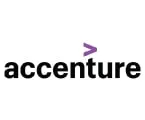

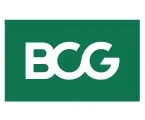
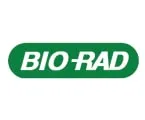


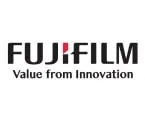

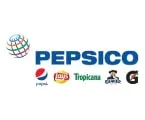
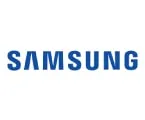


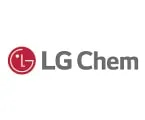
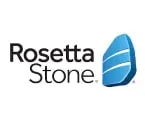
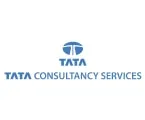
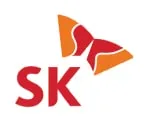
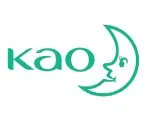
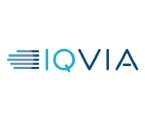
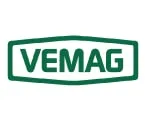
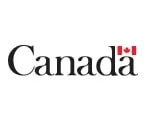

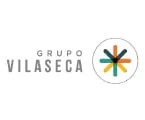
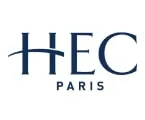
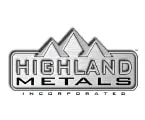
Please enter your corporate email id here to view sample report.
Subscribe to get the latest industry updates